Dïne is the illustrator of Saving Wānanga and other books. She is also a tattoo artist, paints murals and takes on freelance illustration jobs. In the latest in our occasional Day in the Life series, she takes us through a day in the life of a multidisciplinary artist.
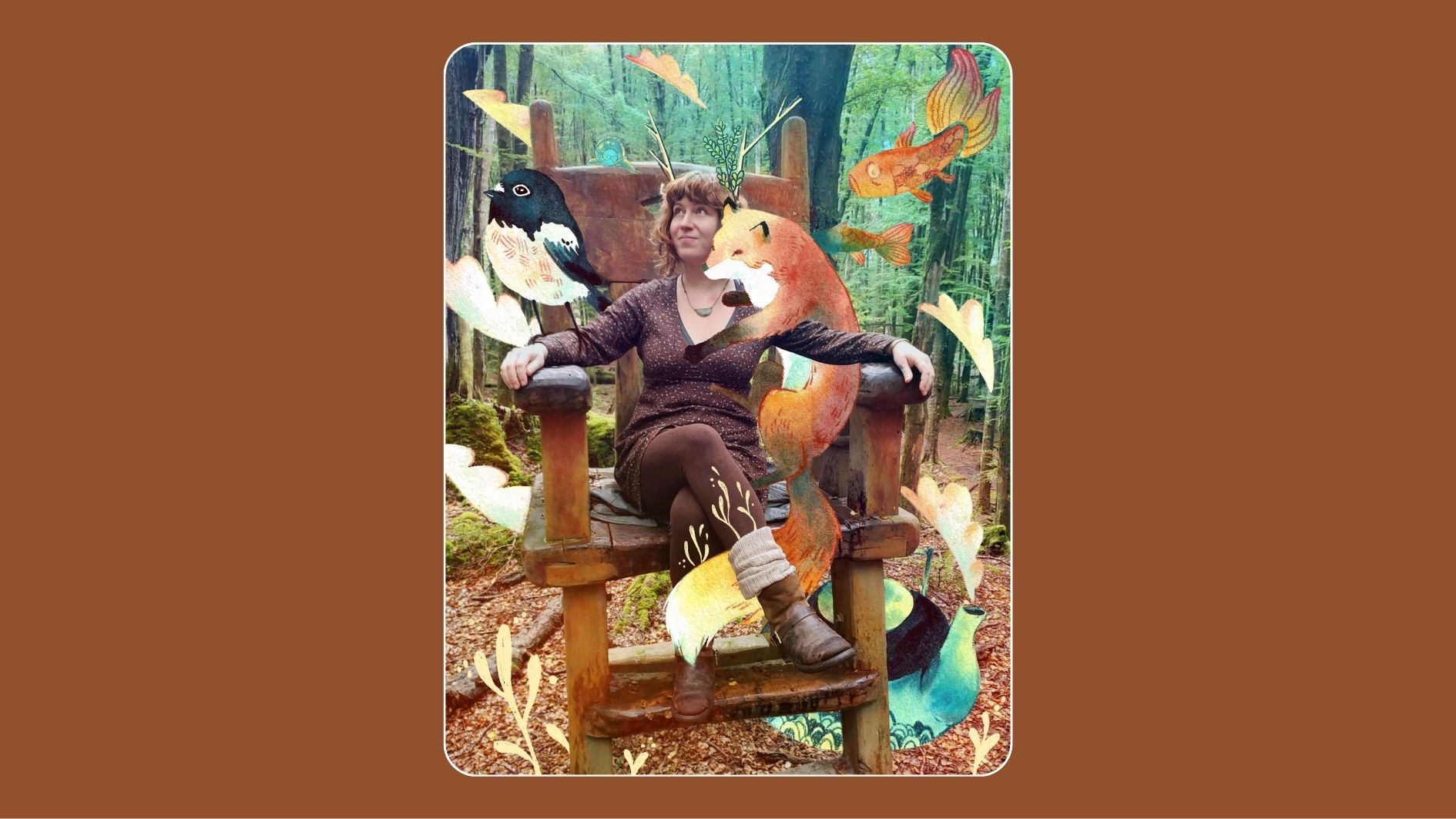
My life is a blend of creativity, family, and a deep connection to nature. Balancing these aspects is both a joy and a necessity, which is why I rely heavily on routine. With multiple roles as an illustrator, tattoo artist, sometimes author, muralist, busy mum, and a questionable gardener (but I have the two coolest chickens in town), staying organised is essential. The structure I’ve built into my days and weeks lets me keep up with my many creative pursuits while making sure my family remains at the centre of it all.
My day starts early and the first few hours of my morning, until around 9am, are completely devoted to family and home life. Between breakfast, school prep, and drop offs, the house buzzes with activity. I do try to squeeze in some work—like answering emails—but realistically, I often find myself with a cold cup of tea once everyone is out the door. Mornings can be chaotic, but they’re filled with purpose and routine, giving me the sense of grounding I need before diving into my creative work.
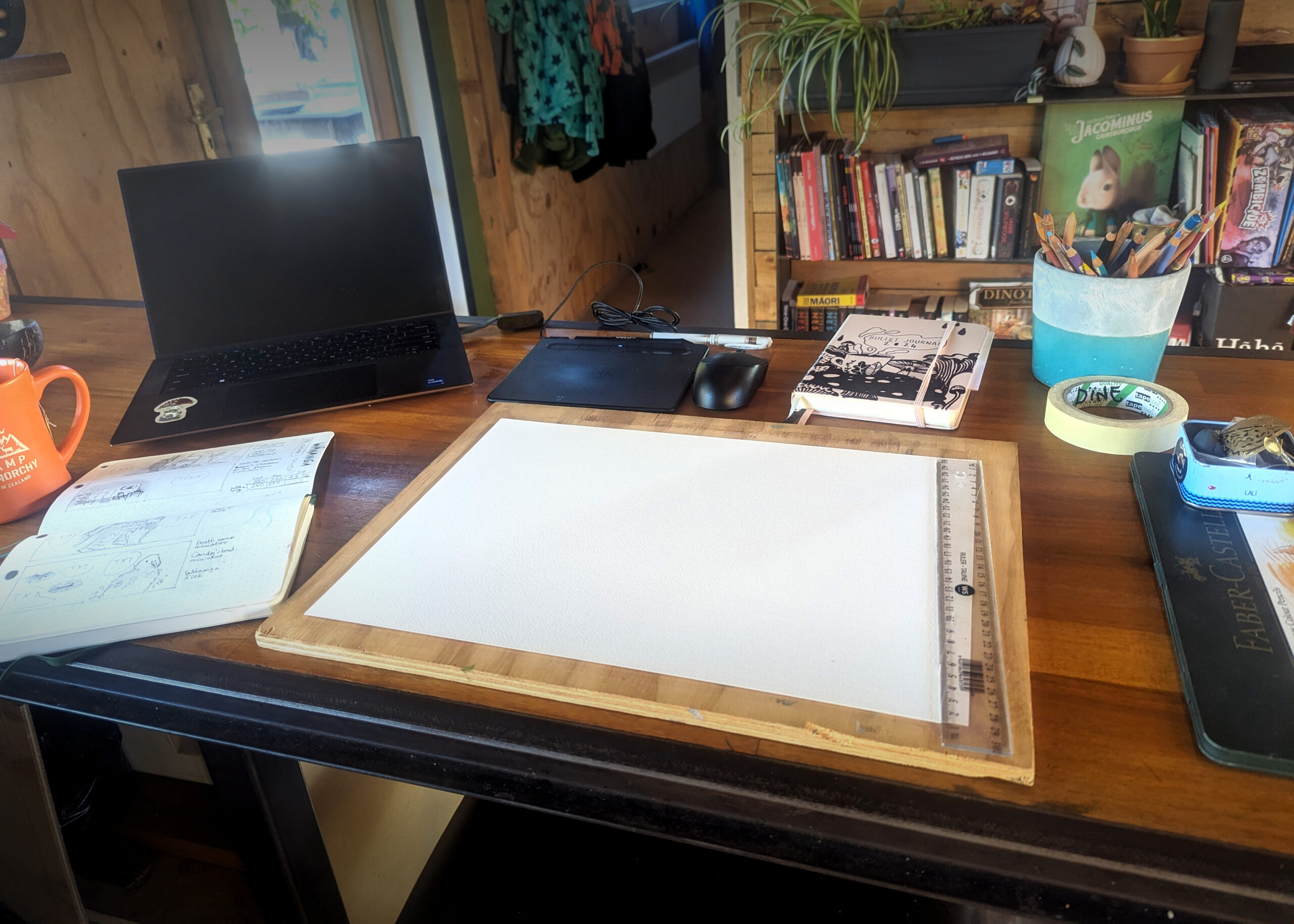
Wednesdays are set aside for admin, which involves a short walk to my favourite local café. Here, I meet up with a few freelance creative friends from my village in the Southern Alps. It’s our weekly ritual—tea, chatting about our past work-week and how to improve the next one, and then tackling the fun stuff: emails, bills, and other admin tasks. This is also an opportunity to look at my project’s schedules and rework it a bit if needed.
I divide my creative week between tattooing and illustrating. The first half of the week is typically dedicated to tattooing, and I love the immediacy and energy. Tattooing allows for spontaneous creativity, particularly when I’m working on flash designs. These are pre-designed tattoos that reflect whatever I’m inspired by at the moment—often nature-themed pieces, with a special focus on autumn, women, empowerment, and inclusivity. Flash tattoos are where I can let loose and explore new ideas without any constraints.
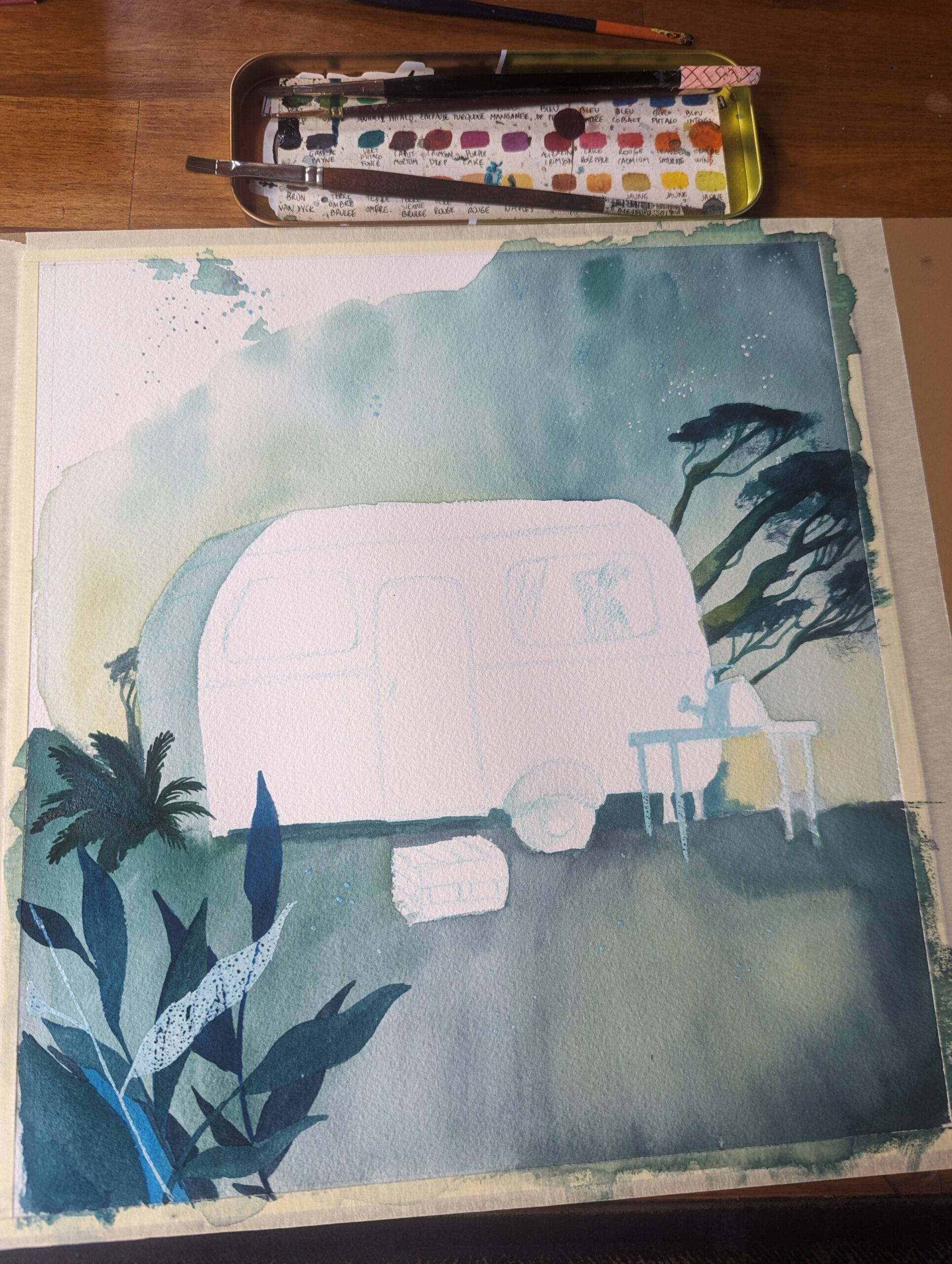
Then there are the custom designs, which offer a completely different challenge. When clients bring me their ideas, whether they’re well-formed visions or vague prompts, I love the process of interpreting their stories through my own artistic lens. It’s a beautiful kind of collaboration, one that often leads me to new inspiration. While flash tattoos give me creative freedom, custom designs stretch my skills in unexpected directions. Tattooing is a way to directly connect with people who appreciate art, which offers a nice counterbalance to my more solitary work as an illustrator.
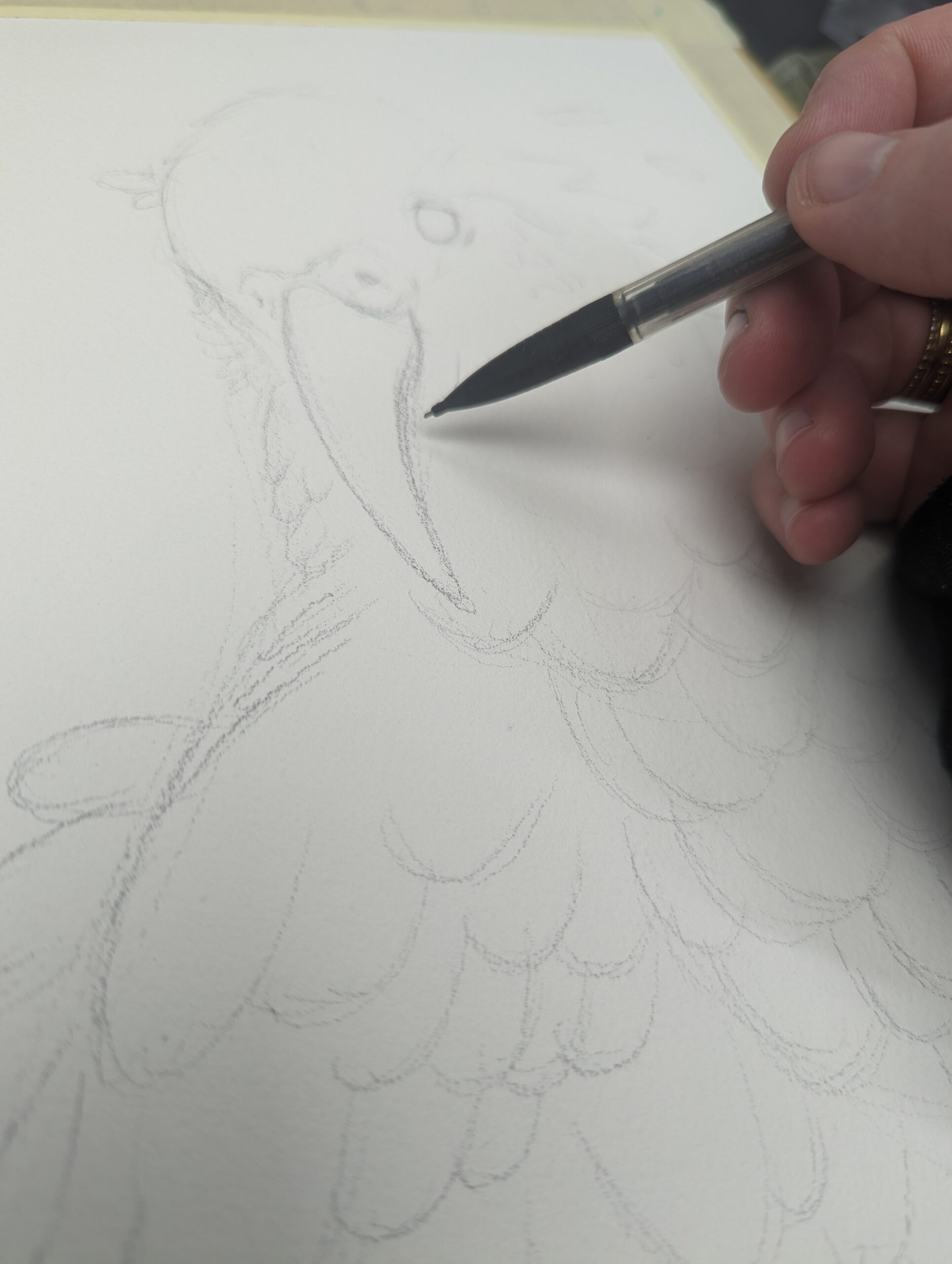
The other half of my week is reserved for illustrating, especially children’s books—a slower and more meditative process. My kitchen bench, as my makeshift studio, is where I spend long hours immersed in the worlds I’m creating on paper. I can’t wait for my proper studio to be built in the garden outside my tiny home, a work in progress. One of my most cherished projects is Saving Wānanga, a story written by Kris Herbert and inspired by real events.
When I approach a project like Saving Wānanga, I start with research, especially when it comes to character design and ambiance. This time, I read and reread the story countless times, allowing the characters to take shape in my mind. I began by sketching early ideas, adjusting and refining them until I was happy with how they looked and felt. Once the characters were ready, I drafted the storyboard, ensuring that each spread flowed naturally into the next. I like to think of this process as creating a visual song—the rhythm between the pages needs to guide young readers’ eyes smoothly through the story. The compositions must be just right, not only to keep the reader engaged but to ensure that the emotional core of the story resonates.
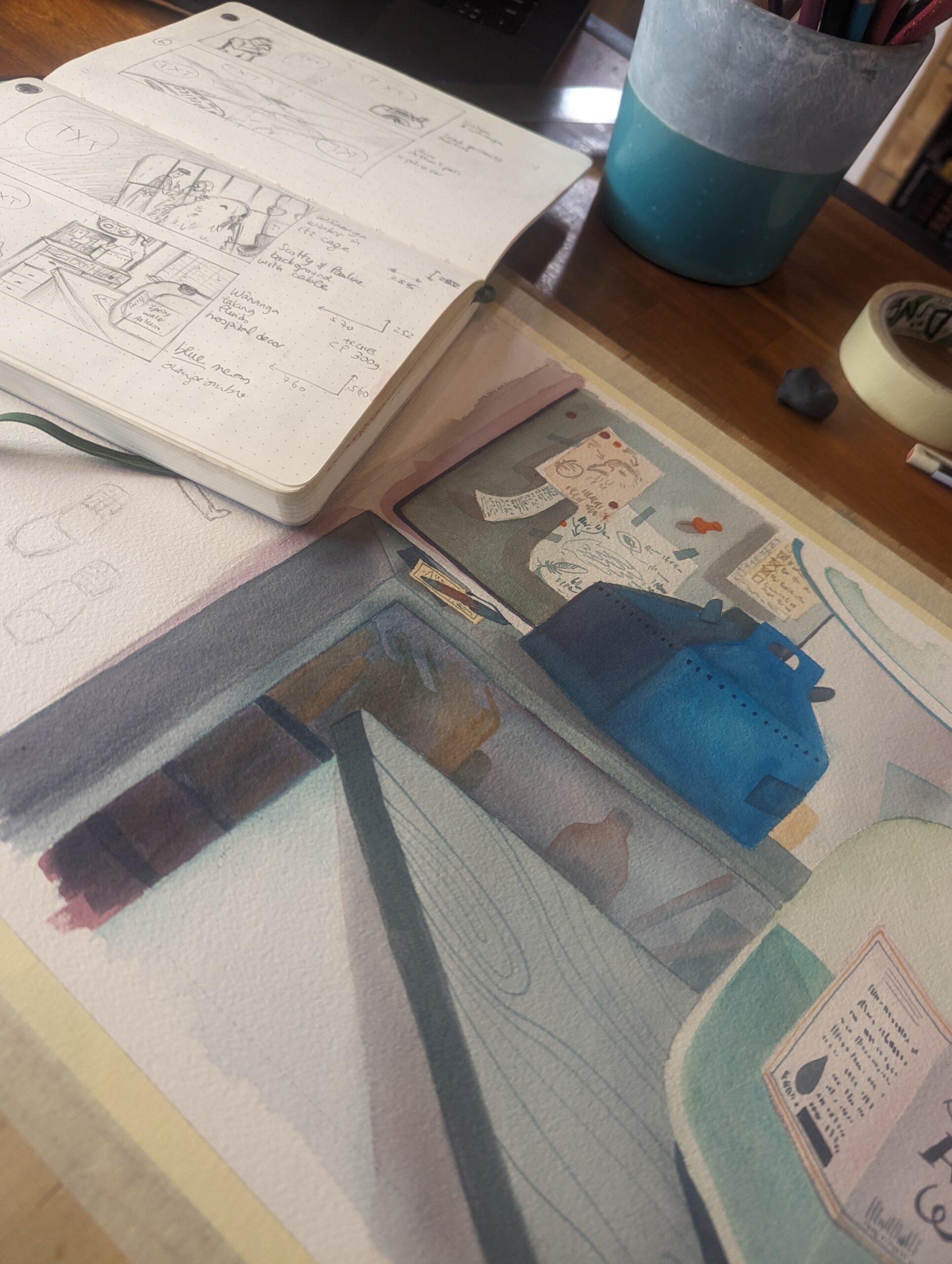
After the storyboard was approved, the final drawing phase began. For Saving Wānanga, I turned to my trusty ‘artwork sketchbook’, where I keep all my initial ideas. This sketchbook is my constant companion throughout any project, and it’s where I refine my thinking, compulsively write down ideas, and revisit visual elements. I referred back to it often as I worked on the final illustrations.
I tape Arches paper to my drawing board, starting with light pencil sketches to map out the scenes. My favourite part of the process comes next—painting. For Saving Wānanga, I used watercolour, with final touches added in white gouache and coloured pencils to bring out details. To me, the tactile satisfaction of working with traditional mediums like these can’t be replicated digitally. Watercolours, especially, allow for those delightful ‘happy accidents’ that add texture and depth to the piece, moments that make the illustrations feel alive. The vivid colours in Saving Wānanga were an absolute joy to play with, and I had a lot of fun experimenting with different atmospheres for the various scenes.
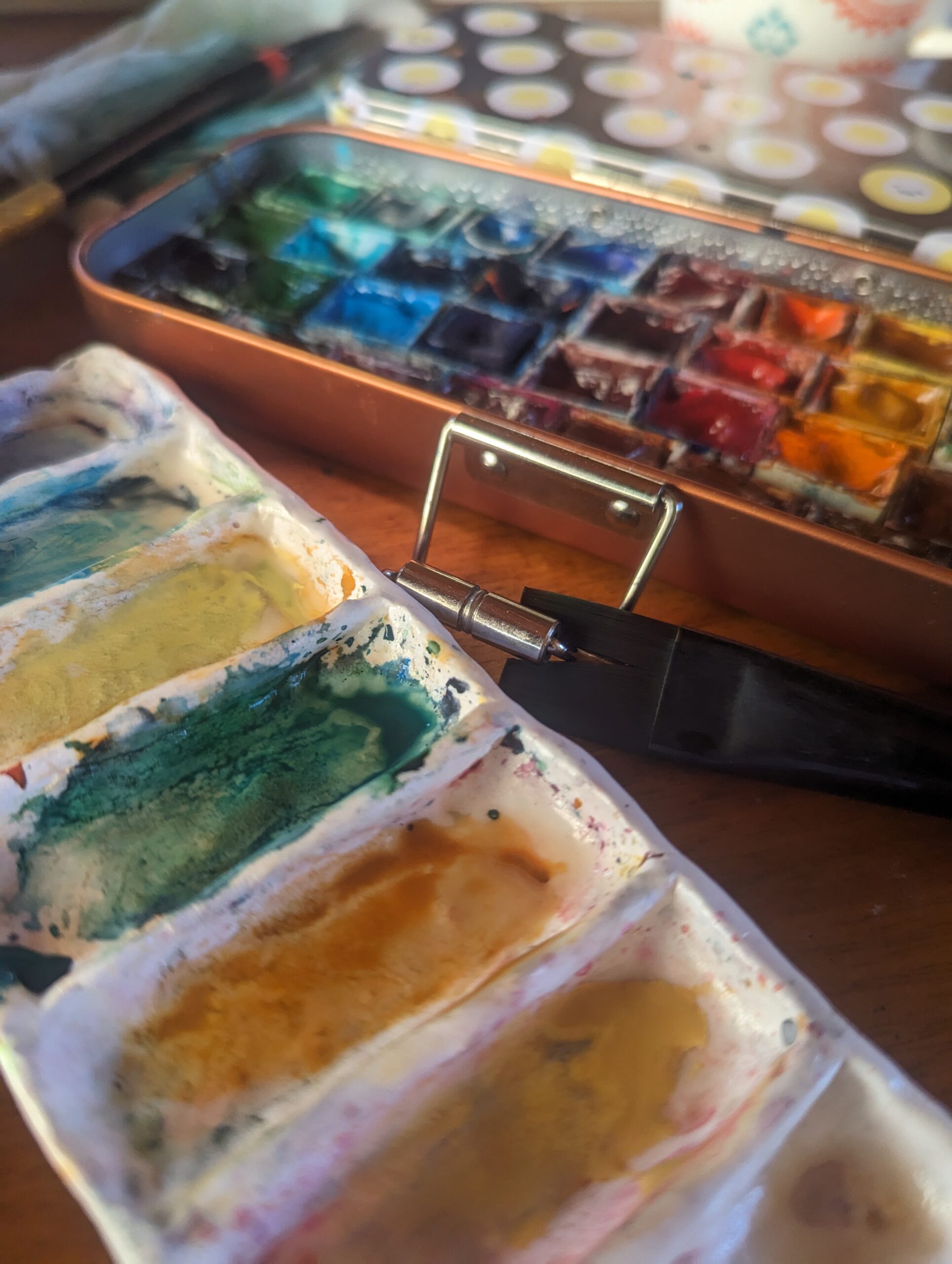
Once the illustrations are finished on paper, I scan them into the computer for any final tweaks or adjustments. I prefer to keep my digital editing light, ensuring that the heart of the work remains on paper. For Saving Wānanga, I focused on preserving the handcrafted feel of each illustration while ensuring the colours and details were sharp for printing. The book is full of vibrant colours and dynamic scenes, and I loved using them to evoke the unique mood of each page—whether it was the vibrant energy of the birds in action or the calm serenity of the New Zealand landscape.
By 3pm, it’s time to shift gears again and pick up the kids from school. From that point until bedtime, my focus is entirely on family. I’ve set strong boundaries for myself to rarely work during these hours, which keeps my family life and creative life in balance. Weekends are our time to escape into nature. We spend hours exploring forests or walking by Lake Wakatipu, giving me a chance to recharge and gather inspiration for the week ahead. These outdoor moments play a huge role in my creative process, fueling my love for natural themes, both in tattooing and illustration.
I want the stories I illustrate to make kids dream, to spark their imaginations…
Being a multidisciplinary artist means managing different energies for different roles. Tattooing is social, spontaneous, and full of creative exchange with clients. Illustration, especially children’s books, is quieter and much more focused on long-term projects that require patience. I’ve learned how these two disciplines complement each other, with tattooing giving me a fast, direct outlet for creativity, while illustrating allows me to dive deeply into a story, nurturing a slower, more reflective process.
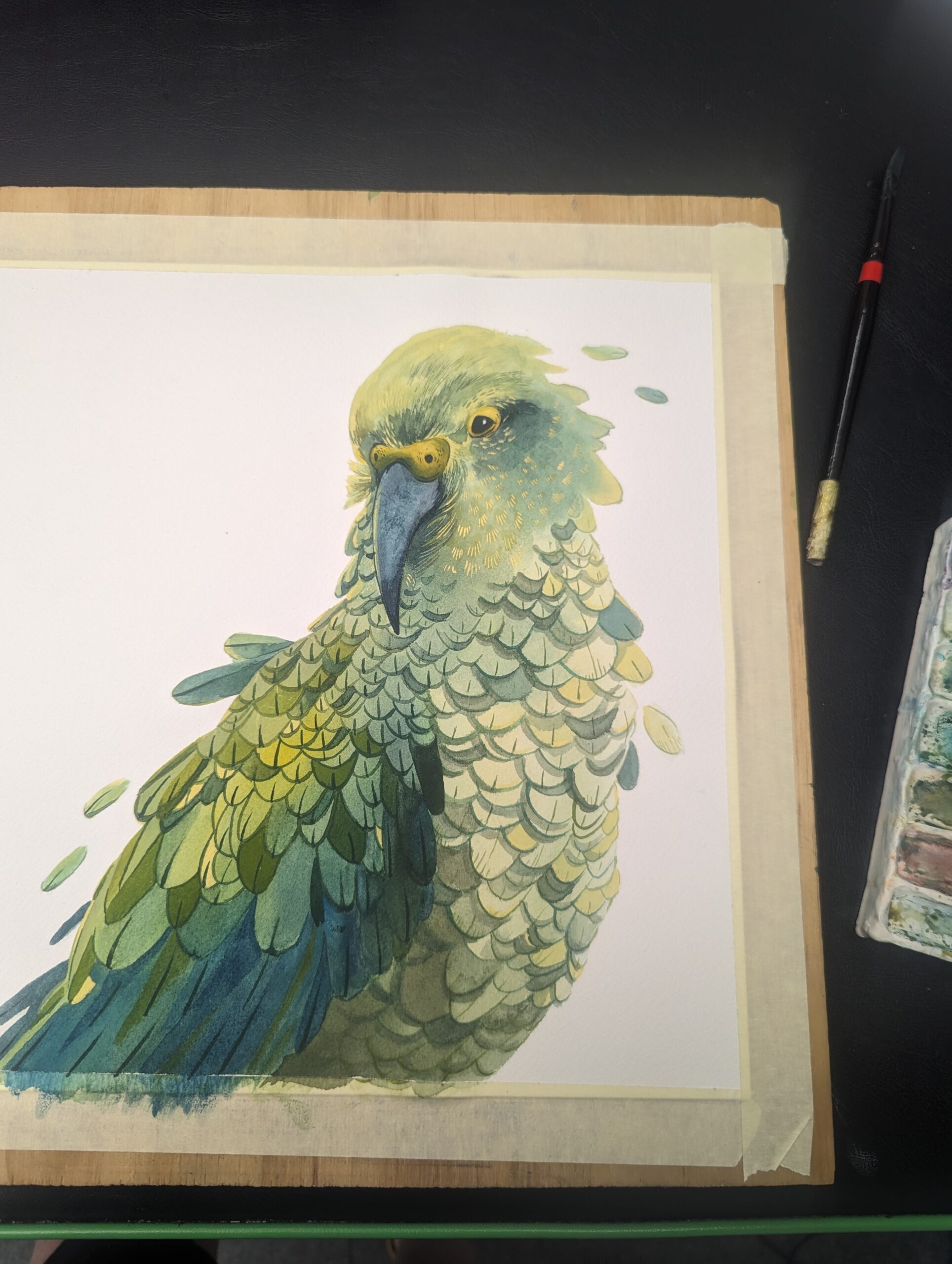
Ultimately, I’m driven by the desire to create worlds that inspire others, especially children. I want the stories I illustrate to make kids dream, to spark their imaginations, and to get them thinking about the world they’re growing up in. Whether I’m tattooing someone’s story onto their skin or bringing a picture book to life, I feel grateful that I get to do what I love every day—balancing routine, family, and creativity to make it all happen.
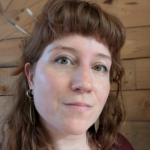
Dïne
Dïne is a French illustrator working in children’s literature, a tattoo artist and a busy mum. She lives and works in a tiny house in Glenorchy. She wrote and illustrated The Extraordinary True Story of the Weka of Lake Whakatipu and illustrated The Uppish Hen & Other Poems, Ruby Loud Mouse and the Ruru and Saving Wānanga. You can read more about her work at https://dinethefox.com/.



